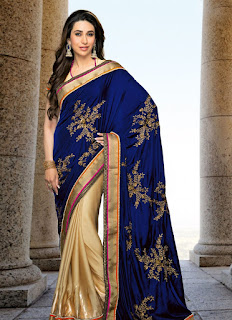About Mount kinabalu
Mount Kinabalu’s specialty lies in its location at a
renowned World Heritage Site—Kinabalu Park. Nature lovers will be delighted to
be able to witness the many variations of flora and fauna that are to be found
on the mountain at different altitudes.
Mount Kinabalu, along with other upland areas of the Crocker
Range is well-known worldwide for its tremendous botanical and biological
species biodiversity with plants of Himalayan, Australasian, and Indo-Malayan
origin.
A recent botanical survey of the mountain estimated a
staggering 5,000 to 6,000 plant species (excluding mosses and liverworts but
including ferns), which is more than all of Europe and North America (excluding
tropical regions of Mexico) combined. It is therefore one of the world’s most
important biological sites.
Standing majestically at 4,095m (13,435 feet above sea
level), Mount Kinabalu is the highest mountain between the Himalayas and New
Guinea. Mount Kinabalu derives its name from the Kadazan word, ‘Aki Nabalu’,
meaning ‘the revered place of the dead’. It is one of the safest and most conquerable
peaks in the world—provided that you’re reasonably healthy and physically fit.
Climbing Mount Kinabalu was the highlight of my trip to
Borneo. It was tough but it was worth each and every step towards the summit. I
loved the way the scenery changed every few hundred meters and the sense of
achievement when we reached the top was unbelievable. Watching the sunrise from
above the clouds really does make you feel like you’re on top of the world.
We began the hike in the morning and reached our
accommodation lodge by about 3pm. We had dinner and rested here for the evening
before getting up at about 3am to continue the walk to the summit. The reason
for the super early start is so you reach the summit in time for the sunrise
when you have the best chance for clear skies and amazing views.
Equipment for climbing Mount Kinabalu
If you’re fit and healthy, you only need the basic equipment
for climbing Mount Kinabalu.
· A small
rucksack – keep the total weight to about 6kg
· A waterproof
jacket – Make sure it’s the small type that folds up into a little bag
· A head torch
– You’ll need this for the morning when you hike in the dark
· Water
bottles – You can refill these along the way
· High energy
snacks
· A packed
lunch
· Blister
plasters – just in case
· A few pairs
of thick socks
· Clean
underwear and t-shirt for the following day
· A small
amount of money for food
· Basic
toiletries and medicine – particularly pain killers
· Warm hat
· Sunglasses –
if you’re lucky
· Sunblock
· Camera
Don’t forget that Kota Kinabalu is home to loads of outdoor
and hiking shops where you can pick up everything you need. I’m mostly saying
this for anyone travelling to other destinations before they reach Borneo. I’d
been travelling for 18 months by the time I got to Borneo and didn’t have any
warm clothes, a day pack or even a torch. I found it all for a bargain price in
Kota Kinabalu.
Some people will say a good set of hiking boots are
necessary but I think it’s personal preference. It is possible to do it in
comfortable trainers but hiking boots are obviously great for keeping your feet
dry and the extra grip and support.
Take your time
Slow and steady certainly wins the race when it comes to
ascending this mountain, especially given some of the slippery conditions
you’re sure to encounter. Take it slow and watch your footing, the last thing
you need is an injury to put you out of the game.
During your ascent try not to rest for long periods, keeping
your breaks at around five minutes so your body doesn’t have time to cool down.
Walking in zigzags is considered safer as you descend, helping to reduce joint
pains and the chances of slipping.
Leave no trace
With an increase in visitors to the mountain, the risk of
damaging the purity and beauty of Mount Kinabalu continues to grow, so it is
essential to extend your respect for the area as far as humanly possible. Make
sure you dispose of your waste properly, most notably with the ‘pack it in,
pack it out’ philosophy. You should also leave behind what you find during the
climb, so that means no souvenir rocks – they’ll only weigh you down as you
climb anyway.
Post-climb recovery
It is highly likely that you’ll be feeling rather tired and
achy after your successful climb and descent of Mount Kinabalu, and while the
typical instinct is to instantly hit the hay, a post-climb trip to the
wonderful Poring Hot Springs is the only antidote you’ll need. Soak yourself in
the bubbling warmth enjoyed in the rock pools and relax your aching muscles and
creaking joints. It’s the perfect way to end your climb.






















































